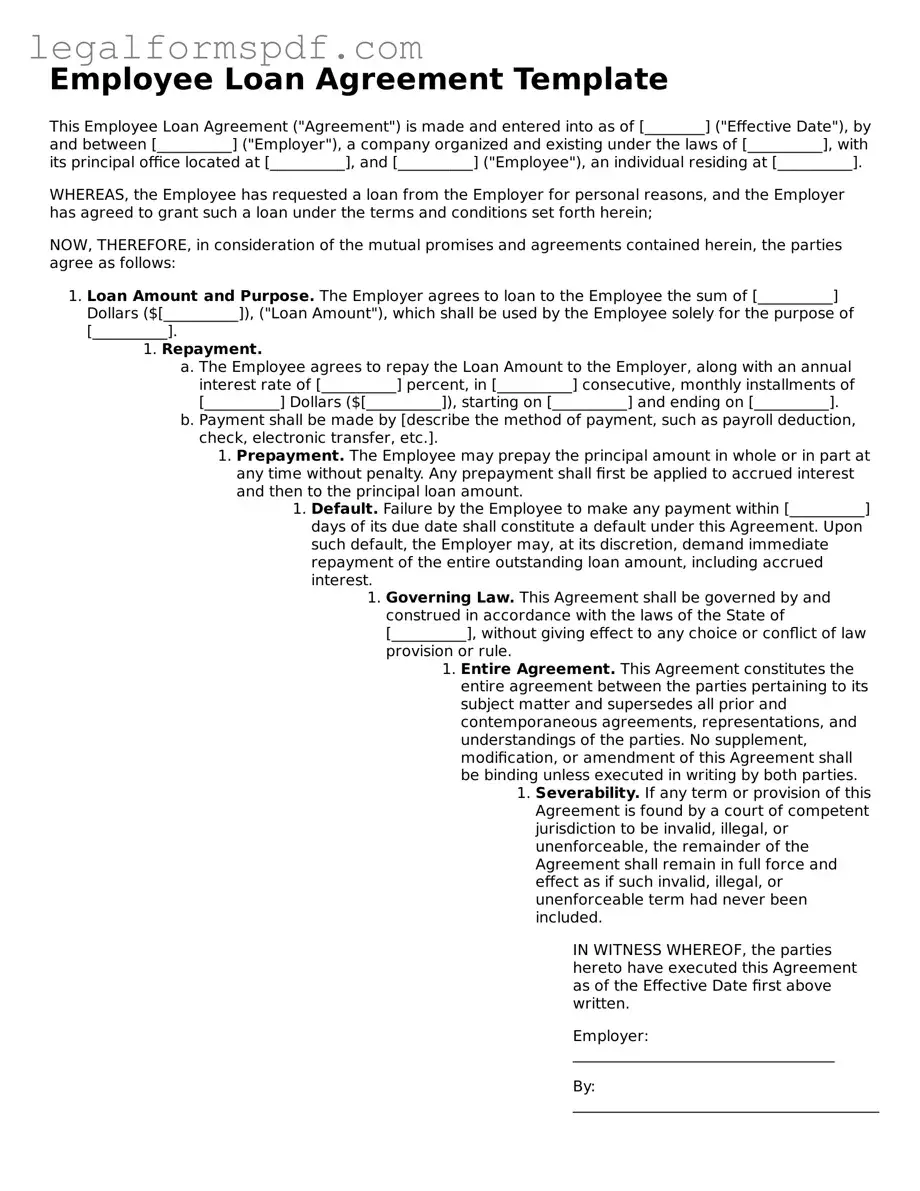What is an Employee Loan Agreement?
An Employee Loan Agreement is a formal document that outlines the terms and conditions under which an employer lends money to an employee. This agreement specifies the loan amount, interest rate (if any), repayment schedule, and any other conditions related to the loan. It serves to protect both the employer's interests by ensuring repayment and the employee's interests by clearly stating the terms of the loan.
Why should an Employee Loan Agreement be used?
An Employee Loan Agreement is used to create a legal obligation and formalize the loan process between an employer and an employee. It helps in avoiding misunderstandings or disputes by clearly defining the loan terms. Additionally, in the event of non-repayment, it provides a legal framework for the employer to recover the loaned amount. This agreement also reassures the employee that the terms of the loan will not be arbitrarily changed.
What key elements should be included in an Employee Loan Agreement?
An effective Employee Loan Agreement should include several key elements:
- The full names and contact information of both the employer and the employee.
- The total loan amount being provided.
- The purpose of the loan, if necessary.
- Details of the interest rate, if applicable.
- A clear repayment schedule, including due dates and the amount of each payment.
- Consequences for late payments or default.
- Any other terms or conditions both parties have agreed upon.
Including these elements helps ensure that all aspects of the loan are clearly understood by both parties.
Can interest be charged on an employee loan, and if so, how is it calculated?
Yes, employers can charge interest on loans provided to employees, but the rate must comply with relevant state and federal laws to avoid being considered usurious or excessively high. Interest can be calculated using a simple interest formula (interest = principal x rate x time) or any other method agreed upon by both parties. It's crucial that the interest rate and calculation method are clearly specified in the Employee Loan Agreement to avoid any confusion.
What happens if an employee leaves the company before repaying the loan?
The terms for this scenario should be specifically addressed within the Employee Loan Agreement. Typically, the agreement will stipulate that any outstanding balance becomes immediately due upon termination of employment. However, repayment terms can vary, such as deducting the remaining balance from final paycheck(s) or arranging for alternative repayment options. It's important for both parties to agree on and understand the procedure for such situations.
Is a witness or notarization required for an Employee Loan Agreement to be legally binding?
While having a witness or notarization can add an extra layer of verifiability, it is not generally required for an Employee Loan Agreement to be legally binding. The most critical aspect is that both parties have a clear understanding of the terms and signify their agreement by signing the document. However, the requirements can vary by state, so it's advisable to check local laws or consult with a legal professional to ensure the agreement meets all legal criteria for enforceability.
